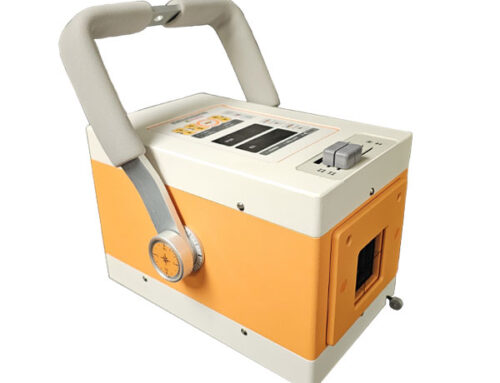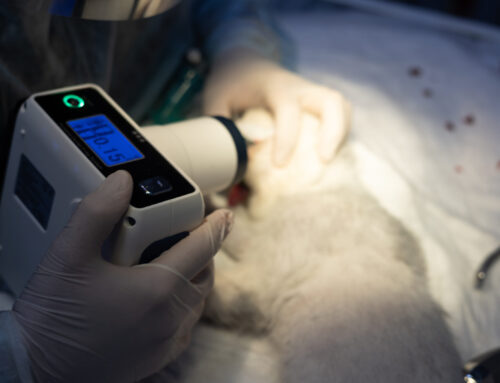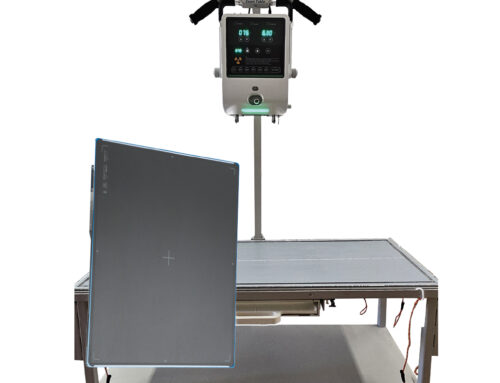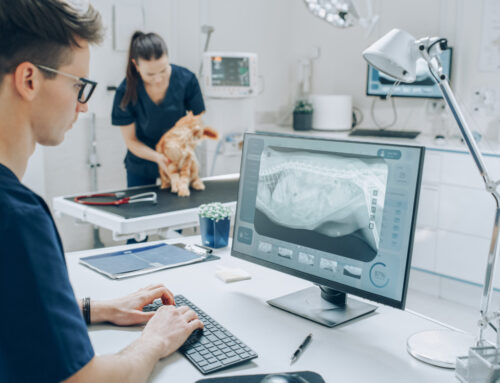A grid is a plate that consists of
parallel spaced bars of lead. Lead is a very effective absorber of
x-rays. The interspace material does not appreciably absorb x-rays.
The purpose of
the grid is to absorb scattered x-rays between the patient and the
film. The scattered x-rays are created within the patient by an x-ray
tissue interaction that results in the conversion of the incoming x-ray
to an electron and a “new” x-ray with somewhat less energy moving in a
new direction. In essence, the x-ray is deflected off its original
straightline course. If this redirected “new” x-ray successfully exits
the patient, it delivers exposure to the film that is untrue relative
to the anatomical structure from which it originated.
the grid is to absorb scattered x-rays between the patient and the
film. The scattered x-rays are created within the patient by an x-ray
tissue interaction that results in the conversion of the incoming x-ray
to an electron and a “new” x-ray with somewhat less energy moving in a
new direction. In essence, the x-ray is deflected off its original
straightline course. If this redirected “new” x-ray successfully exits
the patient, it delivers exposure to the film that is untrue relative
to the anatomical structure from which it originated.
A fundamental
assumption in the formation of the x-ray image is that x-rays travel in
straight lines from the origin in the x-ray tube through the patient
to the film. Most grids are focused grids. This means that the lead
bars are angled in the same plane as the x-rays coming from the tube.
The grid is placed between the patient and the film. Most often in small
animal systems, the grid is incorporated into the table positioned
just above the film tray. Grids can also be purchased that are laid on
top or independently affixed to the cassette.
assumption in the formation of the x-ray image is that x-rays travel in
straight lines from the origin in the x-ray tube through the patient
to the film. Most grids are focused grids. This means that the lead
bars are angled in the same plane as the x-rays coming from the tube.
The grid is placed between the patient and the film. Most often in small
animal systems, the grid is incorporated into the table positioned
just above the film tray. Grids can also be purchased that are laid on
top or independently affixed to the cassette.
Grids are quite
effective in removing the scattered x-rays from the thickness greater
than 10cm. However, if you decide to use a grid for the area in
question, it may be easier to use it for all thicknesses rather than to
have to remember to activate it or deactivate it.
effective in removing the scattered x-rays from the thickness greater
than 10cm. However, if you decide to use a grid for the area in
question, it may be easier to use it for all thicknesses rather than to
have to remember to activate it or deactivate it.
If you are interested in learning more about this subject, call DIS at 1-800-346-9729 or e-mail joe@vetxray.com.







